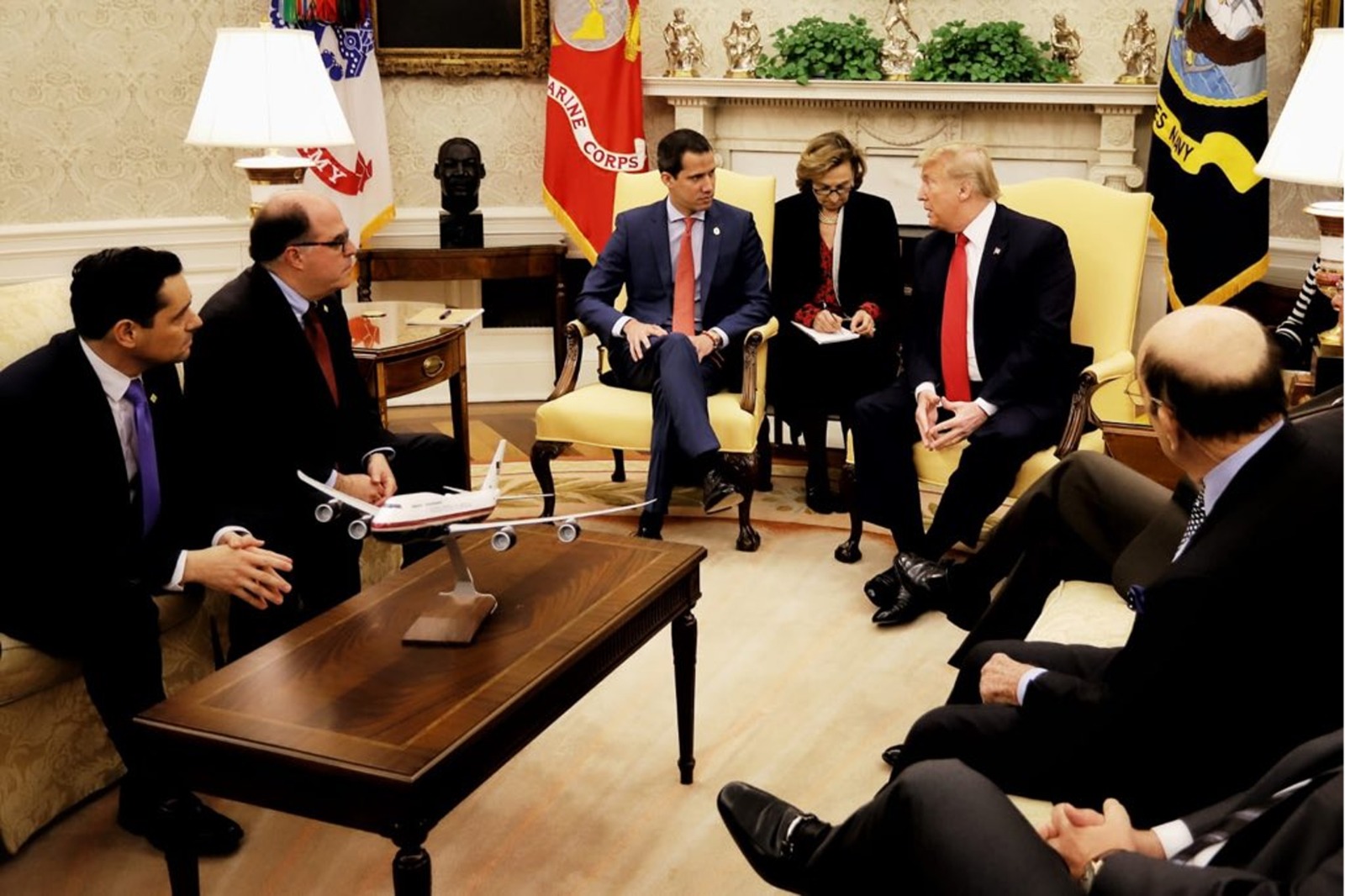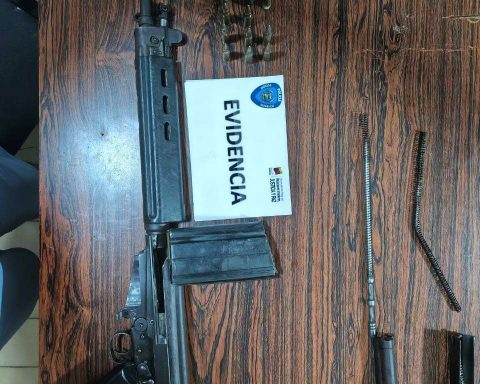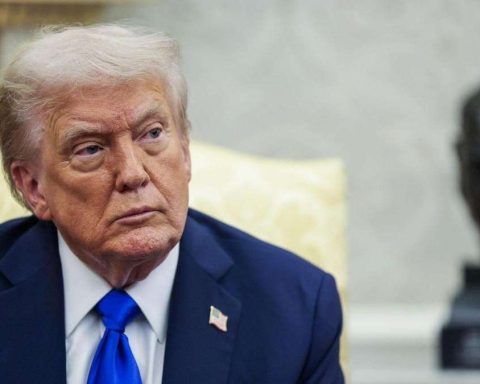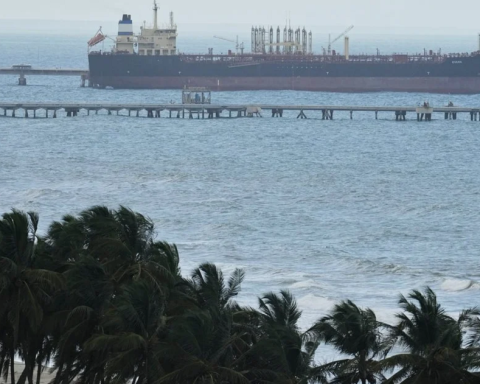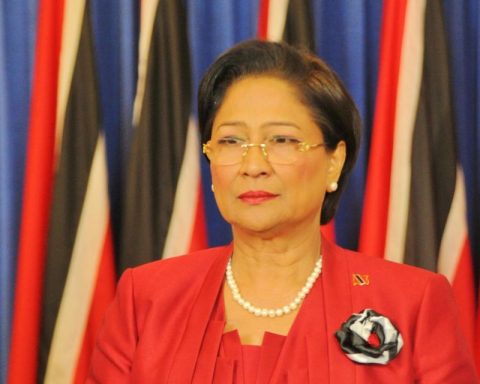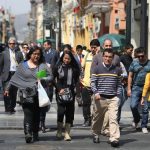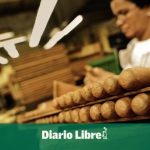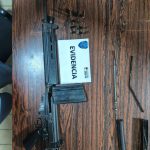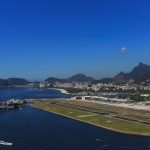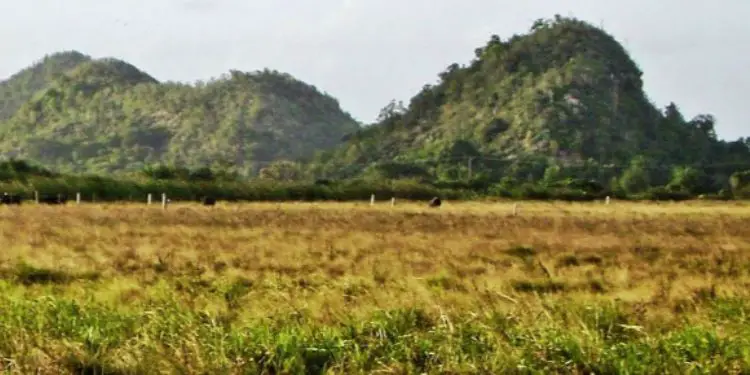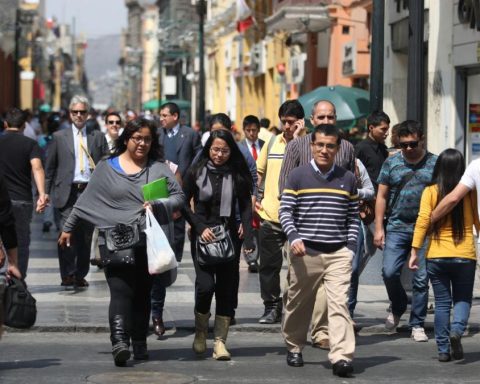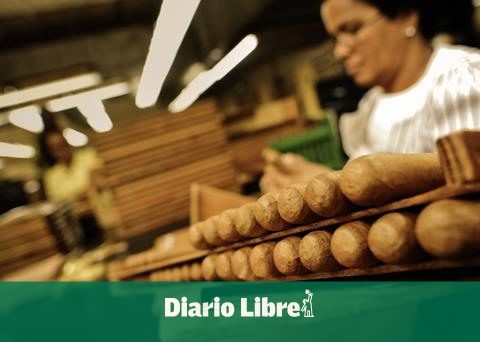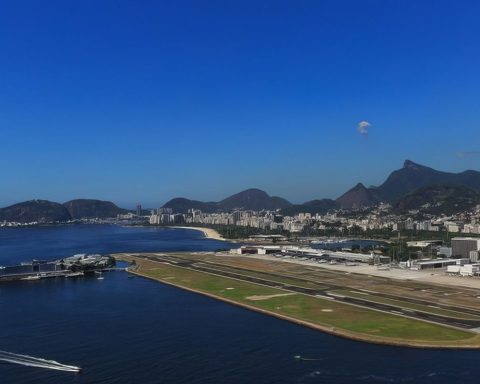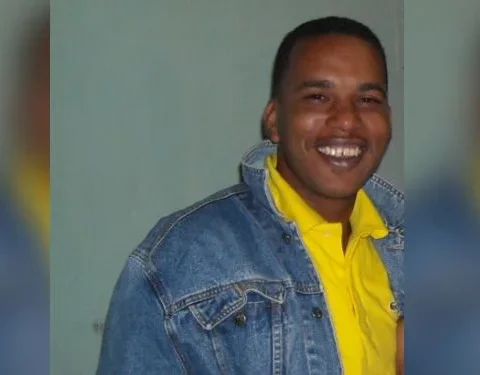2017 was a year where tensions between Venezuela and the United States worsened as a result of the arrival of right-wing extremism to the White House government in the figure of the republican magnate Donald Trump, who assumed the presidency of this country on January 20. of 2017.
This US administration, characterized by the arrogance, volatility and arrogance of its boss, described Venezuela as a “problem” for US interests that should be addressed immediately and with all the power that the US nation possesses.
“The next president of the United States must stand in solidarity with all oppressed people in our hemisphere, and I will stand up for oppressed Venezuelans who want to be free,” Trump said on September 17, 2016 as he was running for the White House.
2017: Soft Coup and Invasion Threat
In 1994, the essay called “From dictatorship to democracy” appeared under the authorship of Gene Sharp, an American political scientist who worked for the CIA in the elaboration of techniques aimed at causing the overthrow of governments by a non-military means.
Among the steps to be executed, after having created discomfort in society and developing intense campaigns in defense of press freedom and human rights, is an active fight for political and social demands and in the manipulation of the collective to start demonstrations. and violent protests, threatening institutions.
This is how on March 31, 2017, a series of protests began in the city of Caracas whose slogan was “Maduro resigns now.” These protests, which lasted until August of that same year, had the unrestricted support of the United States, which accused the Venezuelan government of being a “disgrace for humanity.”
During these protests, which gradually demassed until they were carried out by small shock groups -made up in their vast majority of young people who were described by the spokesmen of the then Trump administration as “freedom fighters”-, there were no less of 120 deaths and hundreds of wounded.
“At the beginning I valued the action of these young people, I saw them as brave, because they endure the brutal onslaught of the security forces, something that I do not dare to do, but from time to time, when I see that motorcycles begin to arrive with hooded, I walk away, because it scares me, I don’t know who they are,” opposition protester Rosario Machado told Sputnik in May of that year.
After the peace achieved with the election of the National Constituent Assembly in August, in February 2018 it was announced that, by September 2017, Donald Trump in a meeting with the presidents of Argentina, Mauricio Macri; from Colombia, Juan Manuel Santos, from Peru, Pedro Pablo Kuczynski and from Brazil, Michel Temer, raised the invasion against Venezuela.
“My staff told me not to talk about this”, was the introduction that Trump made before asking these South American heads of state the question of whether they would agree to a “military solution” in Venezuela, obtaining a negative response from all, according to an AP report citing White House officials on condition of anonymity.
At the end of this appointment, the then US National Security Adviser HR McMaster would explain to the president in a private conversation what were the dangers of an invasion that he claimed would cost Washington the support of Latin American governments, “earned with great effort”.
2018: Assassination drones
After the victory of Nicolás Maduro in the presidential elections organized in May 2018, a new plan was raised that sought to end the Government, this time with a more violent nature and whose objective was the assassination of the President.
The place of the events was Bolívar Avenue in Caracas. There the President of the Republic was in front of a military parade made up of the various units of the Bolivarian National Guard that was commemorating its 81st anniversary of creation.
Two DJIM600 drones, loaded with one kilogram of C4 explosives each, were arranged for this plan, which consisted of bringing these flying objects closer to the presidential dais where the Creole President was located to assassinate him with the explosion.
This assassination operation was frustrated by the actions of the officers in charge of presidential custody who, when they observed that the unidentified drone with which they had arranged for the television transmission was approaching the stage and turning on the signal inhibitor, they managed to interrupt with the remote control. remote control and proceeded to detonate it, while the second drone crashed into a building.
After the attack, evidence emerged that showed that both the drones and the training of the performers had been trained in Colombia, at the Atalanta farm for three months and they were offered 50 million dollars and a stay in the United States.
The first detainees were Juan Carlos Monasterios Vanegas, alias “Bons”, and Argenis Gabriel Valero Ruiz, alias “Ingeniero”, who was the pilot of the drone. Their confiscated phones and computers contain photographs and videos of the military parade rehearsals.
After confessions by the detainees, it was determined that the intellectual authors of this operation had been the then deputies Julio Borges and Juan Requesens, the latter detained and confessed to his participation.
On this fact, the National Security adviser, John Bolton, would confess in his book “The room where it happened: memories of the White House” that for the Trump administration “although the attack failed, it demonstrated the vigorous dissent within the military” and It was an incentive for the US president to insist on the possibility of a military invasion against Venezuela: “Do it! This is the fifth time I have ordered it.”
2019: Border raid and military coup
With the failure of the assassination attempt, came the implementation of the so-called “interim government” which, after being recognized by the United States as “legitimate”, got down to work on actions aimed at bringing about the overthrow of the president. Ripe.
Among the first actions was the one carried out on February 23 when, under the premise of “entering Venezuela with humanitarian aid” from Colombia, a group of people tried to enter Venezuelan territory with trucks that were later found to contain material for the so-called guarimbas.
After several hours in which Venezuelan civilians and soldiers prevented the access of people and material prepared to generate violence, the Government denounced that this plan sought to establish a kind of “liberated zone” in the state of Táchira in order to start an invasion with military support. Colombian and American that will advance on Caracas, seat of the national Executive.
This statement would be confirmed by Bolton in his book where he assures that the ruling was due to the lack of courage of the Colombian military who shunned the confrontation that was designed.
“We found out much later that there was speculation that Colombians got cold feet fearing that a military clash on the border would drag them (into a conflict) and that after years of internal wars against the insurgency and drug trafficking the troops would not they were ready for a conventional conflict against Maduro’s armed forces. And nobody thought of that before that Saturday?” Bolton questioned.
After this failure, on April 30 of that same year, the world rose up with the information of the supposed takeover of La Carlota, a military air unit located in Caracas, by a group of soldiers who had risen up against government.
“Today, brave soldiers, brave patriots, brave men attached to the constitution have come to our call”, were the words with which Juan Guaidó began a video posted on his social networks.
This maneuver, which was dubbed the “banana coup” after its failure, had the flagrant support of the United States, as demonstrated by the tweets published early in the morning by Republican Senator Marcos Rubio and John Bolton, who called for support this attempt
“The FANB must protect the Constitution and the Venezuelan people. It must support the National Assembly and legitimate institutions against the usurpation of democracy. The United States supports the people of Venezuela,” wrote the National Security adviser, who in a few hours would reveal his participation in planning this military coup by accusing Defense Minister Vladimir Padrino López and the then president of the Venezuelan government of “treason.” Supreme Court of Justice (TSJ), magistrate Maikel Moreno.
“You don’t answer our calls,” Bolton revealed in a statement outside the White House, which marked the end of a day in which the result was the flight of the then head of the Bolivarian National Intelligence Service (Sebin), Cristopher Figuera and the refuge in the embassy of Spain, of Leopoldo López, who was serving a sentence of “house by jail” for his involvement in the violent events of 2014 with the “La Salida” plan.
2020: mercenary raid
By 2020, Donald Trump is in the last year of government and in the midst of campaign announcements for re-election, in February he receives Juan Guaidó at the White House with whom he holds a meeting that was later revealed to be to plan a mercenary incursion against the country, using Venezuelans trained in Colombia and US mercenaries to do so.
In the meeting where they were, Mark Esper, Secretary of Defense, and Mauricio Claver-Carone, National Security Advisor, the self-proclaimed man was asked “whether Venezuelans would be willing to organize, train, and fight because the US Army has experience in training forces.” foreigners”, to which Guaidó replied that “yes, I would be”.
After this meeting where Claver-Carone and Guaidó indicated as a priority the preparation of a mercenary incursion, on May 3 the Gideon operation was launched, which was crushed by the actions of the Bolivarian National Police and the Bolivarian National Armed Forces, finding the neutralization and capture of his executioners, among whom were two ex-US marines identified as Luke Alexander Denman and Airan Berry.
The entire plot behind this failed mercenary operation would be revealed by statements by Jordan Goudrou, a former United States Green Beret and representative of the mercenary company Silvercorp, who told Reuters that Denman and Berry “were working with me. Those are my boys.”
The information derived from the investigation indicated that the US government commissioned the DEA to repair this action and delegated all its operational planning to a private company, Silvercorp.
This information was confirmed by the Venezuelan general Clíver Alcalá Cordones, who served as one of the preparers of the Venezuelans who were part of the group of 60 mercenaries who left the Colombian Guajira for the Macuto and Chuao coasts to enter the country for the purpose of to assassinate President Maduro and other high officials.
The contract signed by Guaidó with Goudrou remained as evidence of this adventure, who is now suing him for failing to comply with the agreed payments, as well as the confessions of the detainees, where in each of his words the word DEA appears as the main support for the financing and preparation of this operation.
All this history of aggressions and threats of force carried out in the last seven years, are a reflection of a foreign policy of the White House towards Venezuela marked by interventionism and the promotion of violence that began in 2002 with the coup d’état against President Hugo Chávez, going through the oil strike of 2002 and 2003, the guarimbas of 2007 and 2014, as well as various assassination attempts without much resonance within the media that has opted to disqualify all these complaints and facts under the argument of “supposed” and “self-attacks”.

